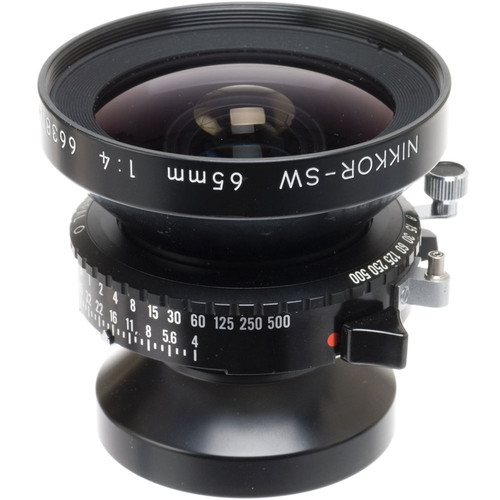Results 21 to 31 of 31
-
23rd June 2016, 02:42 PM #21
Re: World's First Mirrorless Medium Format Camera
-
23rd June 2016, 03:07 PM #22
Re: World's First Mirrorless Medium Format Camera
Exactly.
Many of the better cameras with fixed lenses from the 1950s and into the 1960s in fact had leaf shutters. Not only do they have a higher synch speed, but they are very quiet when compared to the focal plane shutter.
The main downside of this design is that it is very expensive to implement when want interchangeable lenses, as there is quite a price premium in installing a shutter into every lens, which is why focal plane shutters became so popular. Hasselblad has been using these in-lens shutters for as long as I can remember.
-
23rd June 2016, 03:09 PM #23

- Join Date
- May 2012
- Location
- northern Virginia suburb of Washington, DC
- Posts
- 19,064
Re: World's First Mirrorless Medium Format Camera
Thanks for all the explanations about the shutter technologies. I had no idea!
-
23rd June 2016, 03:45 PM #24
-
23rd June 2016, 04:00 PM #25
-
24th June 2016, 12:33 PM #26
Re: World's First Mirrorless Medium Format Camera
I have to admit that I have never managed entirely to shake my case of gear acquisition syndrome, but this wouldn't be on my list if I had a lot of money to spend. If I were a landscape photographer producing very large prints, perhaps. But for what I do, switching to a body like this simply wouldn't help much, and it would make my gear even larger and more cumbersome. Just speaking personally, if someone gave me a wad of cash conditional on my spending it on gear, #1 on my list would be one or two good, longer lenses. When I read the reviews of the new Canon 100-400, I did get kind of starry-eyed. Given what I do, I think I could also make good use of the Laowa 15 mm macro lens, and my work would be better if I bought more lighting equipment and improved my lighting skills. All of that would take precedence over this. But that's just my taste and my particular style of shooting.
-
24th June 2016, 02:09 PM #27

- Join Date
- May 2011
- Location
- SE Michigan
- Posts
- 4,511
- Real Name
- wm c boyer
Re: World's First Mirrorless Medium Format Camera
I confess ignorance when I pose this question, but...has anyone ever truly quantified the absolute
crispiness of sensor images?
When I etch a line on metal and examine that line under a microscope, there is a definite line of
demarcation between the line and the metal, this is something that the eye can perceive. Yet,
when I take a picture of that etched line, that line of demarcation is now represented by a several pixel blur.
Admitting that no camera/sensor has attained the IQ of the eye...which is the best-est?
-
24th June 2016, 09:02 PM #28
Re: World's First Mirrorless Medium Format Camera
The reason I love going Strobist with my X100T or my lil' old Canon Powershot G9. Leaf shutters, built-in ND filters, and syncing at 1/1000 with a $60 all-manual flash. It kinda spoils you.
... or a portrait photographer who adores thin DoF. The thing is, this is 645 format in a body that's smaller than a 5DS, let alone a Pentax 645D or Hasselblad H6D.
Granted, the lenses would be the PITAness in terms of carting the system around, given that your lenses would need to be wider and longer than those for 135 (full-frame) format, and the lenses might have to compromise on speed for portability, just as the Sony E-mount full frame lenses do. They certainly can't use their current lenses without an adapter, given the registration distance difference, so new lenses are undoubtedly in the works. But for someone who's used to carting around digital medium format, this is probably a huge relief, both cost and weight wise. $9,000 is still easier on the wallet than $26,000.
-
24th June 2016, 09:11 PM #29
Re: World's First Mirrorless Medium Format Camera
Bigger is better, all things being equal when it comes to sensors. From an IQ standpoint the medium format will give you a better image and the new Hasselblad should outperform the Canon 5DS. It will only be noticeable you are printing fairly large prints (think 24" x 36" and larger). Anything on a computer screen is going to be downsampled.
-
24th June 2016, 10:16 PM #30
-
2nd July 2016, 12:21 PM #31

- Join Date
- Jan 2016
- Location
- PRC
- Posts
- 152
- Real Name
- buy me a drink first.
Re: World's First Mirrorless Medium Format Camera
I don't know whether I'm wrong about this as a relative beginner but it seems to me that Leica has been the Rolex of the photographic world for a long time, but somehow Hassy managed to dodge that, perhaps because they are so expensive?
That said, this new system really does appeal. From a purely aesthetic viewpoint, less is most defnitely more.

 Helpful Posts:
Helpful Posts: 

 Reply With Quote
Reply With Quote

